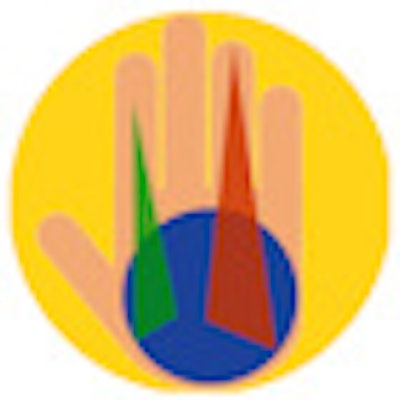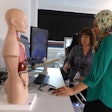
After I changed jobs in 2008, moving from a subspecialized radiology department to a general radiology unit, I was forced to take a new look at my profession.
I had previously worked at a thoracic section with a lot of high-resolution CT scans and pulmonary cancer, as well as some cardiac imaging and patients with infections. I soon learned that in the general radiology department, high-resolution CTs are few and far apart, and nobody really cares about the latest TNM classification or RECIST criteria in your reports. The most numerous examinations are musculoskeletal, and MRI at that.
My current department has all the modalities except vascular intervention and nuclear medicine. There are only three PET/CT systems in Norway, so that is not a concern for most radiologists here. My new "customers," i.e., referring clinicians, still expect me to know everything about everything. I also realized that the clinicians expected my reports to be as in depth as those from the neighboring subspecialized department. We share the same PACS, and our reports and images are often viewed in both hospitals, especially as many patients are transferred across for further procedures -- particularly surgical, gynecological, or cancer treatment.
My level of stress increased considerably when during my normal day, I had to report on everything from head to toe. As with any self-respecting radiologist, I ran back to my books and studied hard. I am still not done yet!
This got me thinking: When can I consider myself a "good" radiologist? Would applying for and passing the European Society of Radiology's (ESR) exam and obtaining an ESR diploma make me "good"? How can I best keep up with all the new aspects of radiology?
The answer is never easy.
A search on PubMed coughed up quite a few relevant articles. It is a very important topic for quality assurance in imaging. The ESR has published a document, "Good practice guide," which also tackles some of these aspects, but where is the line between a general radiologist and a subspecialist? The training charter from the ESR, recently updated for all modalities, also gives an indication about the minimum basic knowledge required in the section called the "core of knowledge."
I have discussed this with my colleagues and we agree on one thing: Our education never stops and our training is never finished. In that sense we are all trainees for life. The only difference between specialists and "new" radiologists is that we have a license from the government that lets us work independently.
In a world where almost all research in radiology is undertaken by subspecialists, the value of a general radiologist is not so visible in conferences or presentations. Some general radiologists would even argue that they do not want to do research; that is exactly why they chose general radiology.
A very intelligent and hard-working colleague of mine, whom I consider to be a "good" radiologist, once said, "General radiology is imaging for normal people. I do not ever want to work in a subspecialized department."
I suppose she has a point. Every radiologist does not want to subspecialize. In many European countries, the spread of population and varied structure of healthcare demands general radiology knowledge rather than subspecialists.
We all know that in practice, all general radiology departments divide the different areas of expertise among themselves: some take up abdominal, others neuro, pulmonary, etc. The challenge for all radiologists, but even more so for general radiologists, is how to keep up the quality of your work when the spectrum is so broad.
Obligatory continuing medical education (CME) is implemented in many European countries. In the Netherlands, the authorities -- with the blessing of radiologists -- have gone as far as to demand a certain number of specified CME points to continue reporting certain examinations, e.g., eight CME points annually for mammography. General radiologists have to obtain 200 CME points in five years. Is this the new reality for radiologists? Will 100 CME points help my knowledge of radiology, if I never have time to actually report examinations?
In Norway, only general practitioners have obligatory CME imposed on them. The specialists (all specialties, not just radiologists) may take four months' paid study leave every five years. This was negotiated with the government and instituted by the medical association in the past century, so that specialists "in production" get time free from on-calls and daily practice to study, do research, and learn new procedures. This is to ensure scientific development for all specialists. It is an earnest investment in the continuing education of the medical profession. So with all these options open to me, it should not be difficult to be "good" -- or is it?
After some thought, I imagined or visualized the lines between general and subspecialized radiology knowledge in the form of a hand. The whole hand constitutes all of radiology, whereas the palm represents the basic knowledge we have at the end of our training, the fingers represent subspecialized knowledge, and the borders are always changing.
 Good radiologists can be visualized using a hand. Image courtesy of Dr. Anagha Parkar.
Good radiologists can be visualized using a hand. Image courtesy of Dr. Anagha Parkar.To see what I mean, please refer to the graphic. The blue circle is what you know when you pass your exams after four to five years of training. You then choose to enter a subspecialty, and after a few years, your knowledge is like the red triangle. Alternatively, you choose general radiology, where you can climb up a few joints in some fingers (green triangle), but you never reach the top. The yellow circle is a general radiologist's dream, but I fear it is a Utopian dream that no single person can reach; if someone claims to know it all, steer clear of them because they are delusional! Maybe, however, a group of radiologists can reach it.
I think the answer to my question about what makes a good radiologist is that even if the government introduces obligatory CME or study leaves, it is the responsibility of individual radiologists to make a personal effort to stay updated and never stop asking questions. It is equally important to always evaluate one's own limitations and competence on a regular basis. So, I know where I am in this hand. Do you?
Dr. Anagha Parkar is a radiologist at Haraldsplass Diakonale Sykehus in Bergen, Norway. She is also a member of AuntMinnieEurope.com's Editorial Advisory Board.
The comments and observations expressed herein do not necessarily reflect the opinions of AuntMinnieEurope.com.
















